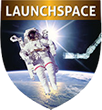Course Details
Course Summary
This workshop covers the application of Military and Space EMC Standards in the design, development, fabrication, testing and maintenance of space equipment and systems. The material is presented at the intermediate level, which is assumed to be at the electronic/electrical engineering Bachelors or Senior Technician level. The mathematical treatment involves using some straightforward basic formulas, but is held to a minimum with emphasis on the practical use of the Military and Space Standards. A brief review of basic EMI/EMC principles is presented at the beginning of the course. Design techniques are presented for the suppression of conducted and radiated emissions. The overall objective of this workshop is to develop a thorough, practical understanding of EMI/EMC testing based on the current MIL-STD-461 and the GEVS, and their application to space systems to assure EMC. (Note: The GEVS is based on MIL-STD-461C). Although the course focus is EMI/EMC, the material includes discussion on Environmental tests such as Temperature, Vibration and Thermal Vacuum.
Course Materials
Each attendee receives extensive notes and reference materials.
Who Should Attend
This workshop is designed for electrical/mechanical engineers, technicians and managers who are responsible for the proper operation of space systems in the space electromagnetic environment (EME).
What You Will Learn
Participants will learn how to: Establish an EMC Program for space projects. Determine the applicable EMC military specifications to space. Prepare a basic EMI/EMC control plan. Prepare a basic EMC test plan. Evaluate an EMI test environment. Identify appropriate EMI test equipment. Perform Military Standard EMC testing on space systems. Prepare a basic EMI/EMC test report. Apply basic EMC engineering principles to determine emission suppression and reduce system susceptibility. Tailor the MIL-STDs and GEVS for specific tasks. Design to meet space EMC standards and other EMC requirements. Techniques for reducing space system emissions and susceptibility.
Course Outline
- Basic Concepts of Electromagnetic (EM) Effects.
EMI/EMC terms and definitions. Common units. Radiated and conducted emissions and susceptibility. Characteristics of EM signals. Common and differential modes - Electromagnetic Environment (EME).
Sources of EMI and victims. Time and frequency domains: transients. Fourier concepts. Narrowband and broadband signals. Victim characteristics. - Project Life Cycle Planning.
Defining the program. Contract preparation and award EMC specifications. Military standards for space applications. Tailoring to meet requirements. - Space E3 Environment. Intentional and Unintentional Sources.
Emission source characteristics (Signatures). EM prediction and measurement data sources for a priori prediction. - Emissions and Susceptibility.
General and detailed requirements: MIL-STD-461 and NASA GEVS. Define emission and susceptibility: CE, RE, CS, RS, and limits. Correlation to common equivalent IEC EMC standards are discussed. - Measurement of EM Interference (EMI).
Testing methods based on MIL-STD-461 and GEVS. Measurement tolerances. Specific tailoring: Notching the basic requirements. Test site characteristics. EUT test configurations. - Test Facilities and Environments.
Shielded rooms. Anechoic chambers. TEM and GTEM cells. Open area test sites (OATS). Test equipment for CE and RE CS and RS. Sensors and receivers, Spectrum analyzers. - Test Methods and Procedures (CE CS).
Conducted emission (CE) testing. Test applicability limits. Test equipment and EUT setup. Automatic data acquisition. Conducted susceptibility (CS) testing. CE and CS reduction techniques. Filtering and design considerations. - Test Methods and Procedures (RE RS).
Radiated emission (RE) testing. Test applicability. Limits. Test equipment and EUT setup. RE electric testing and magnetic field testing. RS testing. RE and RS reduction techniques. Shielding concepts and design consideration. - System-Level Testing.
Requirements for system EMC. Lightning protection. Static electricity ESD mitigation. Space special EMC topics. System-level EMI mitigation techniques (NASA GEVS).
Instructor
Steven G. Ferguson is Executive V.P. at Washington Laboratories, Ltd (WLL) and has been working in the compliance test arena for over 35 years at test laboratories and manufacturing companies designing products, developing procedures and performing tests. He presents various courses on EMI/EMC compliance including EMC for Nuclear Power Facilities, Architectural Shielding and a hands-on course MIL-STD-461 testing at the WLL facility in Maryland and on-site for multiple government and industrial clients.
